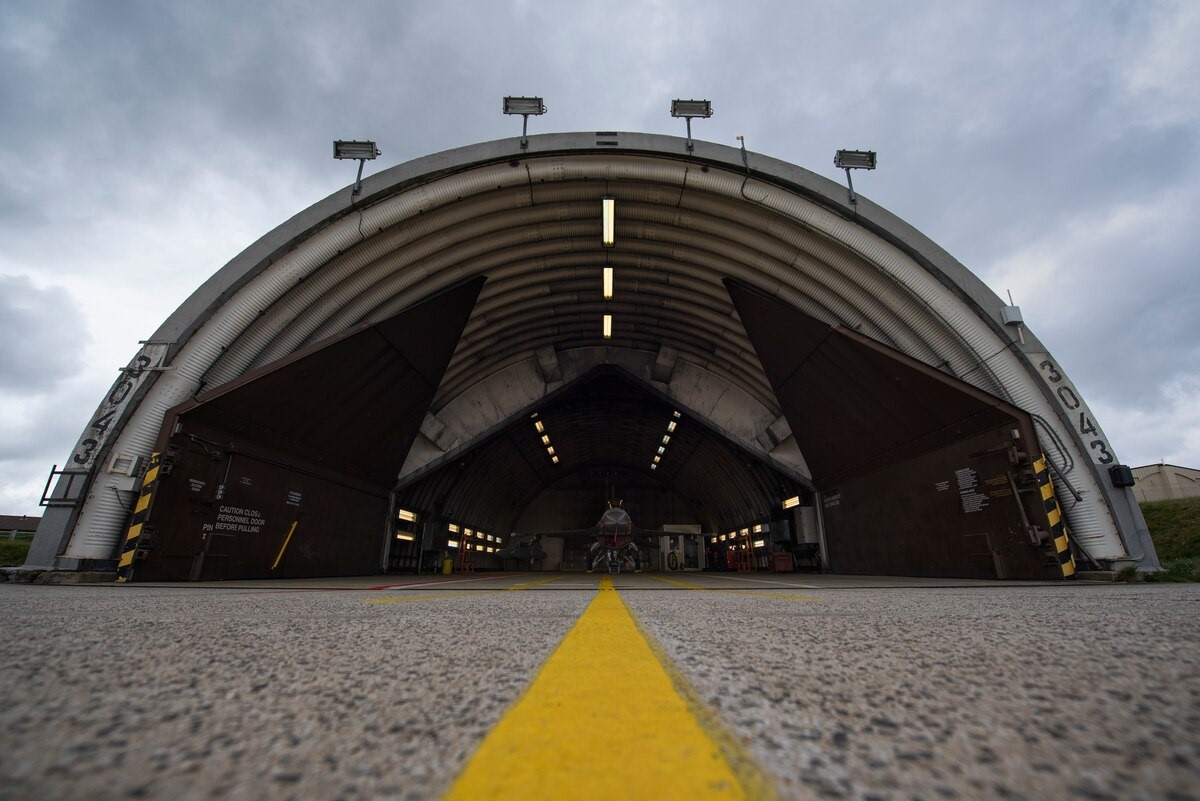
If Australia wants the ability to sustain northern air power, it needs air force bases that can fend off attacking missiles and also quickly recover from the hits by those that successfully penetrate.
The Royal Australian Air Force also needs to hone ways of dispersing valuable but vulnerable aircraft to civil airfields and operating them from there when under stress.
Hardening and dispersal offer greater defensive effect for their cost and are also faster to implement than active defences, so they should take priority while we wait for deliveries of protective surface-to-air systems.
Australia’s primary aim must be to preserve its modestly sized air force, and keep it operating, during the opening stages of a conflict, before an adversary has run down its necessarily limited stock of expensive strike missiles.
The Defence Strategic Review (DSR), issued in public form in April 2023, said the Australian Defence Force ‘must have the capacity to defend Australia and our immediate region.. [and] deter through denial any adversary’s attempt to project power against Australia through our northern approaches’. In addition, the DSR insisted that ‘Australia’s army must be transformed and optimised for littoral manoeuvre operations by sea, land and air from Australia, with enhanced long-range fires.’
In response, the government agreed that improving the ability of the ADF to operate in the northern littoral with the provision of RAAF support from northern airfields was important and listed it as one of six immediate priority areas. The fields are RAAF bases Learmonth and Curtin in Western Australia, Darwin and Tindal in the Northern Territory, and Scherger and Townsville in Queensland. There is also a field on the Cocos (Keeling) Islands in the Indian Ocean.
Then at the annual Australian and US ministerial meeting in July 2023 the joint communique said both sides would continue to progress the upgrading of Australia’s northern bases, particularly at RAAF Darwin and Tindal, with additional upgrades being closely considered for RAAF Scherger and Curtin.
The pressing need to improve the operational capacity and survivability of northern bases is hardly new. One of the DSR leads, Stephen Smith, pointed out that the issue had arisen when he had been defence minister, in the 2012 Force Posture Review and 2013 Defence White Paper. Unfortunately, little had been done since then.
Also, defence analysts have repeatedly emphasised the ‘importance of hardening the critical defence infrastructure and installations throughout northern Australia in the face of growing capability and proliferation of advanced ballistic missile systems, cyber, electronic warfare and long-range strike capabilities.’
Now the federal government is set to spend $3.8 billion over the next four years on Australia’s northern bases, including $2 billion for air bases.
What exactly that will buy is not yet clear, but the government will have to balance affordability against effectiveness while also balancing speed against what is desirable over the medium term.
The review gave some indication of the shopping list in its call for ‘immediate and comprehensive’ work at the air bases. It itemised: hardening and dispersal; runway and apron capacity; fuel storage and supply; aviation fuel supply and storage; ammunition storage; connectivity required to enable essential mission planning activities; accommodation and life support; and security.
Defence Industry Minister Pat Conroy has since said the upgrades would include providing more shelters for aircraft to survive attack.
Another passive measure that has received less discussion is to prepare to disperse aircraft to civilian airfields or even major roads. For that, support teams are needed to supply aircraft with fuel and munitions by road.
The chief of the air force, Air Marshal Robert Chipman, said ‘there’s work to be done… to make sure that we can fight resiliently from our northern networks of bases.’
The relatively small size of the RAAF fleet and the high attrition typically expected with the opening of hostilities in any high end conflict means hardening basing infrastructure is a much cheaper option than replacing billions of dollars of highly sophisticated aircraft.
However, it is essential to get an integrated mix of active and passive measures right, as seen in the 1991 Gulf War, when the sizable and capable Iraqi air force was mostly decimated on the ground despite having many reinforced concrete bunkers. The problem was that they were not adequately supported by active defences. In the first three weeks, US pilots shot down 37 Iraqi aeroplanes, while over the same period 500-600 hardened shelters were targeted, with more than 60% of them destroyed or damaged, resulting in the loss of 141 aircraft in their bunkers.
As the Gulf War example makes clear, passive features need to be supported by active defences, such as surface-to-air systems, electromagnetic warfare systems and defensive air patrols that are intended to neutralise attacking aircraft or munitions before they hit.
The ADF is working on active defence with projects for a Joint Air Battle Management System that will also lays the groundwork for a future integrated air and missile defence capability. The army, meanwhile, is acquiring a new Short Range Ground Based Air Defence system, which could operate independently but will also form an inner layer of a larger, integrated defensive system.
Chipman says that ultimately Australia requires ‘more advanced surface-to-air missiles that are able to engage cruise missiles and ballistic missiles’.
With the DSR setting a near threat horizon, what Australia needs now are the systems, operating procedures and techniques such as dispersal and mobility coupled with the procurement of sufficient active measures that will enable Australia’s northern forces to manoeuvre and survive.
Defence needs to take the most affordable but consequential steps to rapidly reduce the vulnerability of Australia’s northern bases to air and missile attacks by quickly improving the level of base hardening.

